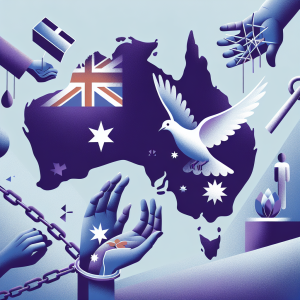Title: Breaking Free: Resources and Support for Women Trapped in Domestic Violence
Introduction:
Domestic violence is an alarming issue that affects countless women worldwide. Escaping an abusive relationship can be an extremely challenging and dangerous task, as victims often face intimidation, threats, and a persistent fear for their safety and the safety of their loved ones. It is essential to raise awareness about the available resources and support systems to empower these women and help them break free from the cycle of violence. This article aims to provide information on various organizations, helplines, shelters, and legal options that offer assistance to women trapped in domestic violence.
I. Recognizing Domestic Violence:
Before delving into available resources and support, it is crucial to understand what constitutes domestic violence. It encompasses physical, emotional, sexual, and financial abuse, as well as coercive control by an intimate partner. Recognizing the signs and patterns of abuse can make it easier for victims to identify their situation, paving the way for seeking help.
II. Helplines and Crisis Centers:
A. National Domestic Violence Hotline:
The National Domestic Violence Hotline (NDVH) is available 24/7, providing crisis intervention, information, and referrals to local resources across the United States. Trained advocates offer support and guidance, ensuring confidentiality and empathy for women seeking help. The NDVH also has a chat feature on their website for those who may prefer this communication method.
B. International Resources:
Numerous countries have helplines and organizations dedicated to supporting victims of domestic violence. For instance, the United Kingdom has the National Domestic Abuse Helpline, while Australia has 1800RESPECT. These hotlines connect women to trained professionals who can provide advice, support, and necessary referrals.
III. Shelters and Safe Houses:
Leaving an abusive relationship often necessitates finding a safe place to stay. Shelters and safe houses offer temporary accommodations, protection, and numerous support services to help women transition to a violence-free life. Confidentiality is a priority, ensuring the safety and well-being of survivors.
A. Local Women’s Shelters:
Most communities have women’s shelters that provide a haven for those escaping domestic violence. These shelters offer temporary housing, food, clothing, counseling, legal assistance, and access to various support programs such as job training and childcare.
B. Emergency Housing Options:
In situations where immediate help is needed, emergency housing options are available. These include hotels, motels, hostels, and other temporary lodgings that provide refuge for women and their children.
IV. Legal Options and Protective Orders:
Navigating the legal aspects of escaping domestic violence can be complex, but there are legal remedies in place to protect survivors. Seeking legal advice and protection orders can ensure the safety of victims and contribute to securing their freedom.
A. Restraining Orders:
Often known as protection orders, restraining orders prohibit the abuser from contacting or coming near the survivor. They can provide legal grounds for immediate protection and help enforce legal consequences in case of violations.
B. Legal Aid and Free Legal Services:
Many regions offer free or low-cost legal services for survivors of domestic violence. Legal aid organizations provide guidance in obtaining divorce, child custody, and child support, ensuring the victim’s rights are protected.
V. Counselling and Psychological Support:
Breaking free from domestic violence requires more than just physical and legal assistance; emotional healing is equally important. Counselling and psychological support can help survivors rebuild their lives, regain self-worth, and overcome the emotional scars left by abusive relationships.
A. Trauma-Informed Counseling:
Survivors can benefit greatly from trauma-focused counseling, where mental health professionals help them process their experiences, develop coping mechanisms, and regain control of their lives.
B. Support Groups:
Participating in support groups can provide a sense of community, validation, and comfort for survivors. Sharing experiences with others who have faced similar challenges can be immensely empowering and aid in the healing process.
FAQs:
1. What should I do if I suspect someone I know is experiencing domestic violence?
If you suspect someone is being abused, approach them with care and concern. Encourage them to seek help and provide information about available resources such as helplines and support groups. However, respect their choices and autonomy, as leaving an abusive relationship can be a complex and dangerous process.
2. How can I help a friend or family member who is trapped in an abusive relationship?
Listen without judgment and offer support while respecting their decisions. Educate yourself about local resources, so you can provide helpful information when they are ready to seek assistance. Encourage them to create a safety plan, which could involve documenting evidence of abuse, saving money, and identifying a safe place to go.
3. Can men become victims of domestic violence too?
Absolutely. While women are predominantly affected, men can also be victims of domestic violence. It is important to provide support and resources to all individuals experiencing abuse, regardless of their gender or sexual orientation.
Conclusion:
Domestic violence is a pervasive issue that affects numerous women worldwide. Breaking free from an abusive relationship is a complex and challenging journey, but with the right resources and support, it is possible to reclaim one’s life. By raising awareness about available options for assistance, we can empower women to seek help, break the cycle of violence, and embark on a journey of healing and self-discovery.




















